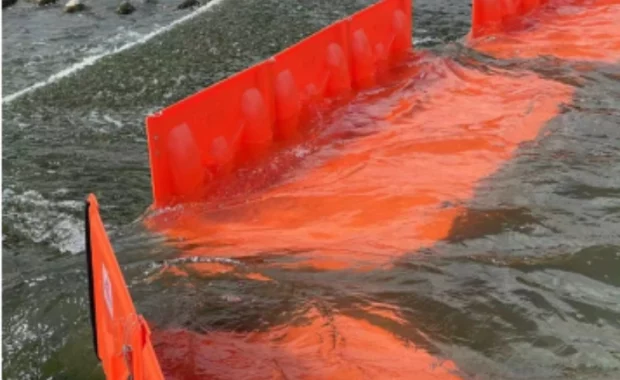Why Temporary Flood Barriers Are Essential for Modern Flood Protection
2 min readFlooding—whether from intense rainfall, storm surges, or overflowing rivers—poses a growing threat in many parts of the world. As climate patterns shift, urban areas expand, and infrastructure ages, the risks of property damage, business interruption, and even loss of life increase. In this landscape, temporary flood barriers have become a critical line of defense. Here’s why they’re essential—and what the latest innovations bring to the table.

What Is a Temporary Flood Barrier?
A temporary flood barrier is a deployable system designed to temporarily block or divert floodwater. Unlike permanent floodwalls or levees, these barriers can be installed only when needed, stored compactly, and tailored to specific site conditions. The “Temporary Flood Barrier” from FloodDefend / NewFlag is an example of such a system—specifically, an L-Shape Free-Standing Flood Board system (also called the FLOODGUARD). NEWFLAG
Key Features That Make Modern Temporary Barriers So Effective
The latest generation of temporary flood barriers, as exemplified by FloodDefend’s product, includes several improvements over traditional designs and older models. Here are some of the innovations and their benefits:
| Feature | What’s Improved | Why It Matters |
|---|---|---|
| Front P-shape EPDM Seal | Adds a P-shaped EPDM (a durable rubber) gasket at the front to improve waterproofing. NEWFLAG | Reduces leakage significantly—helps achieve standards like Japan’s Class 1 waterproofing. NEWFLAG |
| Reinforced Joints / Folded Angles | Earlier designs had 90-degree joints that concentrated stress; new folded angles distribute stress better. NEWFLAG | Improves durability, reduces risk of cracking or failure under pressure. |
| Stainless Steel Locking Clamps | Replaces weaker plastic buckles with stainless steel clamps. NEWFLAG | More stable connections; prevents parts from slipping or failing in strong currents. |
| Double Sealing (EPDM + Sponge Gasket) | Two layers of sealing (outer EPDM, inner sponge gasket) at contact points. NEWFLAG | Reduces leakage under pressure, especially at early stages of inundation. |
| Compact Storage & Fast Deployment | Boards can be partially pre-assembled, stored upright or side-by-side to reduce footprint, quick to deploy during flood emergencies. NEWFLAG | Critical when time is tight and space is limited. |
Advantages Over Traditional Flood Protection Methods
-
Speed & Flexibility: Unlike permanent floodwalls which take time and heavy construction work, temporary barriers can be deployed quickly when the warning comes.
-
Lower Initial Cost: Less expensive to install and maintain than large permanent structures.
-
Reduced Footprint: Compact storage and modular design make them suitable for urban settings or places with limited space.
-
Adaptability: Can be configured for different flood heights or layout constraints.
-
Improved Sealing & Structural Integrity: Leak prevention and strengthened joints/clamps make them more reliable in actual flood events.
Use Cases Where Temporary Flood Barriers Are Particularly Vital
-
About Author